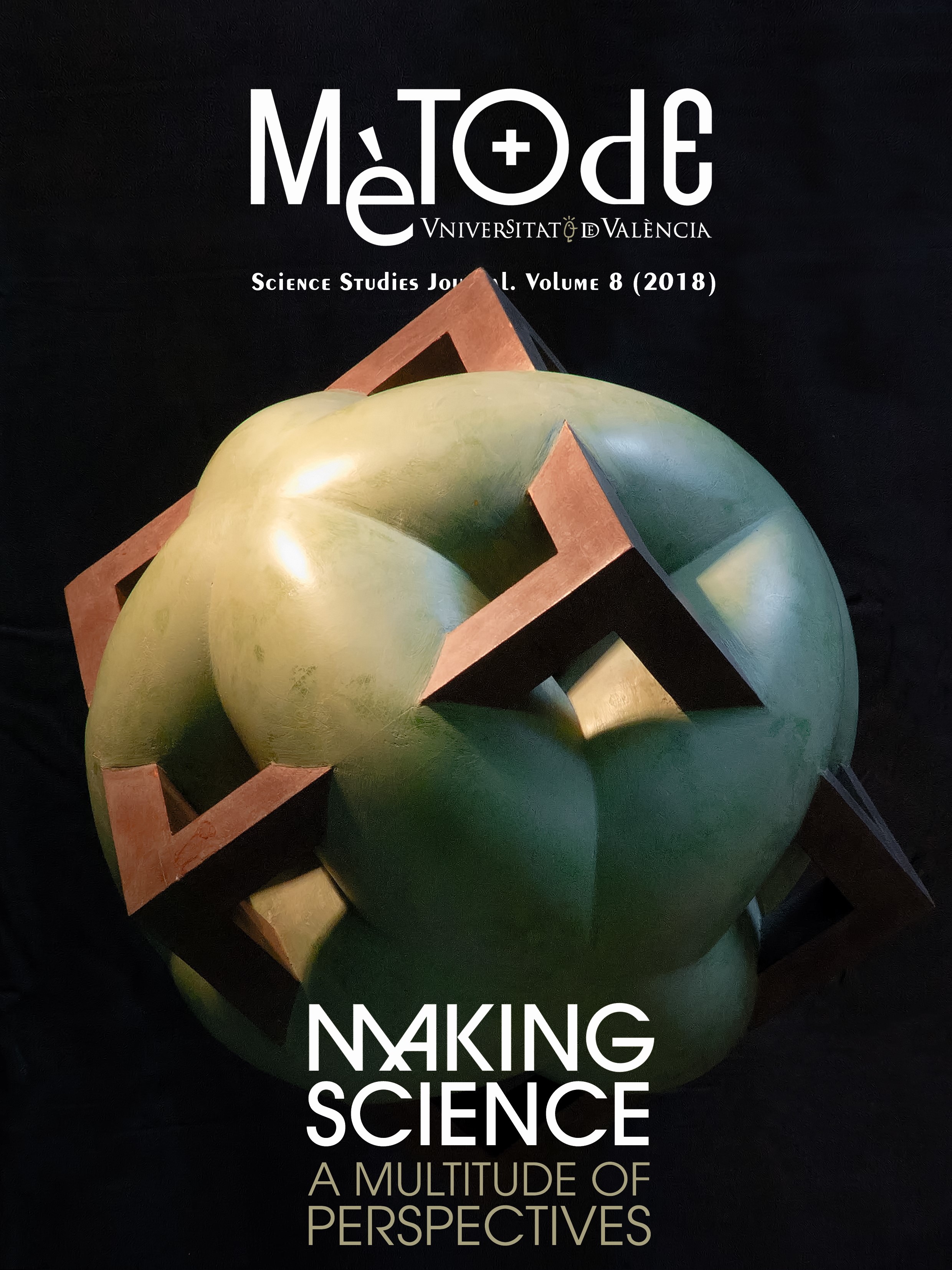Out of Africa: An alternative scenario for the first human dispersal in Eurasia
DOI:
https://doi.org/10.7203/metode.8.10171Keywords:
out of Africa, Dmanisi, early Homo, sabertooth cats, Early Pleistocene, paleoclimatology Abstract
Abstract
Recent paleoanthropological evidence from the early Pleistocene site of Dmanisi in Georgia has revealed that the first hominins out of Africa were more archaic than the coeval African and Asian Homo erectus. More evidence suggests that these archaic hominins were forest dwellers rather than savannah inhabitants. Between 1.8 and 1.6 million years ago a climate crisis caused a new spread of savannah and arid zones across large parts of Africa. As a consequence, early Homo populations splitted, with some populations becoming adapted to the new ecological conditions and others following woodland areas in their regression.
 Downloads
Downloads
 References
References
Agustí, J., & Antón, M. (2002). Mammoths, sabertooths, and hominids. New York: Columbia University Press.
Agustí, J., & Lordkipanidze, D. (2011). How «African» was the early human dispersal out of Africa? Quaternary Science Review, 30(11–12), 1338–1342. doi: 10.1016/j.quascirev.2010.04.012
Arribas, A., & Palmqvist, P. (1999). On the ecological connection between sabre-tooths and hominids: Faunal dispersal events in the Lower Pleistocene and a review of the evidence for the first human arrival in Europe. Journal of Archaeological Science, 26, 571–585. doi: 10.1006/jasc.1998.0346
Blumenschine, R. J. (1988). An experimental model of the timing of hominid and carnivore influence on archaeological bone assemblages. Journal of Archaeological Science, 15, 483–502. doi: 10.1016/0305-4403(88)90078-7
Blumenschine, R. J., & Marean, C. W. (1993). A carnivore’s view of archaeological bone assemblages. In J. Hudson (Ed.), From bones to behaviour: Ethnoarchaeological and experimental contributions to the interpretation of faunal remains (pp. 273–300). Carbondale: University of southern Illinois.
Carbonell, E., Mosquera, M., Rodríguez, X. P., Sala, R., & Van der Made, J. (1999). Out of Africa: The dispersal of the earliest technical systems reconsidered. Journal of Anthropological Archeology, 18(2), 119–136. doi: 10.1006/jaar.1998.0331
Dennell, R. (2009). The Palaeolithic settlement of Asia. Cambridge: Cambridge University Press.
Domínguez-Rodrigo, M. (2001). A study of carnivore competition in riparian and open habitats of modern savannas and its implications for hominid behavioral modelling. Journal of Human Evolution, 40, 77–98. doi: 10.1006/jhev.2000.0441
Horowitz, A. (1989). Continuous pollen diagrams for the last 3.5 m.y. from Israel: Vegetation, climate and correlation with the oxygen isotope record. Palaeogeography, Palaeoclimatology, Palaeoecology, 72, 63–78. doi: 10.1016/0031-0182(89)90132-6
Lordkipanidze, D., Jashashvili, T., Vekua, A., De León, M. S. P., Zollikofer, C. P. E., Rightmire, G. P., … Rook, L. (2007). Postcranial evidence from early Homo from Dmanisi, Georgia. Nature, 449, 305–310. doi: 10.1038/nature06134
Lordkipanidze, D., Ponce de León, M., Margvelashvili, A., Rak, Y., Rightmire, G. P., Vekua, A., & Zollikofer, C. P. E. (2013). A complete skull of early Homo from Dmanisi, Georgia, and its implications for the evolution and population biology of the genus Homo. Science, 342(6156), 326–331. doi: 10.1126/science.1238484
Marean, C. W. (1989). Sabertooth cats and their relevance for early hominid diet and evolution. Journal of Human Evolution, 18(6), 559–582. doi: 10.1016/0047-2484(89)90018-3
Marean, C. W., & Erhardt, C. L. (1995). Paleoanthropological and paleoecological implications of the taphonomy of a sabertooth’s den. Journal of Human Evolution, 29(6), 515–547. doi: 10.1006/jhev.1995.1074
Martínez-Navarro, B., & Palmqvist, P. (1995). Presence of the African Machairodont Megantereon whitei (Broom, 1937) (Felidae, Carnivora, Mammalia) in the Lower Pleistocene of Venta Micena (Orce, Granada, Spain), with some considerations on the origin, evolution and dispersal of the genus. Journal of Archaeological Science, 22, 569–582. doi: 10.1006/jasc.1994.0054
Shatilova, I., Mchedlishvil, N., Rukhadze, L., & Kvavadze, E. (2011). The history of the flora and vegetation of Georgia (South Caucasus). Tbilisi: Institute of Paleobiology. Georgian National Museum.
Tappen, M., Lordkipanidze, D., Bukshianidze, M., & Ferring, R. (2007). Are you in or out (of Africa?). In T. R. Pickering, K. Schick, & N. Toth (Eds.), Breathing life into fossils: Taphonomic studies in honor of C. K. Brain(pp. 119–135). Bloomington, IN: Stone Age Institute Press.
Tchernov, E. (1992). The Afro-Arabian component in the Levantine mammalian fauna: A short biogeographical review. Israel Journal of Zoology, 38, 155–192.
Vekua, A., Lordkipanidze, D., Rightmire, G.P., Agustí, J., Ferring, R., Maisuradze, G., Mouskhelishvili, A., … Zollikofer, C. (2002). A new skull of early Homo from Dmanisi, Georgia. Science, 297, 85–89. doi: 10.1126/science.1072953
Downloads
Published
How to Cite
-
Abstract2254
-
PDF969
Issue
Section
License
![]()
All the documents in the OJS platform are open access and property of their respective authors.
Authors publishing in the journal agree to the following terms:
- Authors keep the rights and guarantee Metode Science Studies Journal the right to be the first publication of the document, licensed under a Creative Commons Attribution-NonCommercial-NoDerivatives 4.0 International License that allows others to share the work with an acknowledgement of authorship and publication in the journal.
- Authors are allowed and encouraged to spread their work through electronic means using personal or institutional websites (institutional open archives, personal websites or professional and academic networks profiles) once the text has been published.





